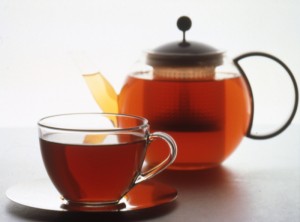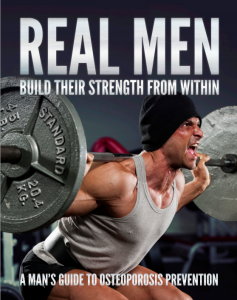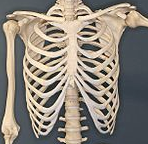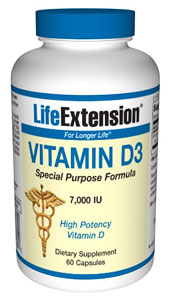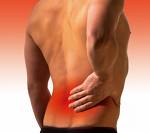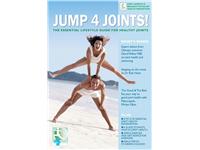San Francisco: A study published today for a treatment that is given just once a year has been shown to significantly decrease the risk of broken hips and other broken bones, caused by post-menopausal osteoporosis.1
The study published in the New England Journal of Medicine on 3rd May found that the active treatment zoledronic acid 5mg (Aclasta) cut the risk of broken hips by 41% and the risks of breaks to the spine (vertebrae) by 70% compared to patients on no treatment (placebo). Broken bones at other parts of the body, such as wrists, were cut by 25%.
Zoledronic acid 5mg was given as a short infusion (at least 15 minutes) once a year in the three year study. All patients received daily calcium and vitamin D supplements which are essential for good bone health.
The authors state: A once-yearly infusion of zoledronic acid (5mg) during a 3-year period was associated with a significant and sustained decrease in the risk of vertebral, hip, and other fractures. An annual infusion of zoledronic acid (5 mg) may provide a promising approach to reducing fracture risk. 1
The three-year study was carried out in 7,765 post-menopausal women, aged 65 to 89, from 27 countries including the UK. Approximately half received zoledronic acid 5mg and half placebo.
British women who took part in the study were treated at centres in Aberdeen, Sheffield, Liverpool and Glasgow.
The pharma, Novartis, is currently seeking a licence for zoledronic acid 5mg (Aclasta®) for post menopausal osteoporosis in the UK.
Over the three years, 88 (2.5%) of the women in the placebo group suffered a hip fracture compared to 52 (1.4%) of the women in the zoledronic acid 5mg group.
The researchers, led by Professor Dennis Black, of the University of California, San Francisco, said During a 3-year period, an annual infusion of zoledronic acid 5mg significantly reduced the risk of fracture at all key osteoporotic fracture sites, including the two primary end points, vertebral and hip fractures. 1
A regimen of infusions once a year appears to ensure that patients will have a full treatment effect for at least 12 months.1
Despite the availability of effective treatments for osteoporosis, poor adherence to drug regimens reduces the benefits and presents a major challenge for health professionals. 4
Figures from the National Osteoporosis Society say that over 60,000 hip and 120,000 vertebral fractures take place each year in the UK. 22
The UK’s National Osteoporosis Society says that around one in five (18%) people die within three months of having a broken hip accounting for around 14,000 deaths per year in this country alone. A woman with a vertebral fracture has a four times higher risk of death than a woman with no vertebral fractures. 2
One of the authors of the study, Professor Richard Eastell, Professor of Bone Metabolism at Sheffield Universitys School of Medicine and Biomedical Sciences, said the findings provided potential good news for thousands of women suffering from osteoporosis.
Professor Eastell pointed out that The ability to only have the treatment once a year does mean that it simplifies the whole regimen. You dont have to remember every day to take this medication. There is no doubt that Aclasta reduces vertebral fracture, hip fracture and other breaks.
Professor David Reid, Professor of Rheumatology at the University of Aberdeen, who led one of the UK centres involved in the study said that the hip fracture data was particularly relevant.
Preventing hip fractures remains the holy grail of treating osteoporosis, as we know that six months after a hip fracture, nearly a fifth of patients will be dead. Reducing hip fractures by 41% is therefore highly clinically significant.
Study Details
In this double-blind, placebo-controlled trial, 3889 patients were randomly assigned to receive a single 15-minute 5mg infusion of zoledronic acid and 3876 were assigned to receive a placebo infusion at baseline, at 12 months, and at 24 months; the patients were followed until 36 months. 1 All patients in the study also received daily calcium and vitamin D supplementation.
Primary end points were new vertebral fractures (in patients not taking concomitant osteoporosis medications) and hip fracture (in all patients). Secondary end points included bone mineral density, bone turnover markers, and safety outcomes.
Treatment with zoledronic acid 5mg reduced the risk of vertebral fracture by 70% over a 3-year period, as compared with placebo (3.3% in the zoledronic-acid 5mg group vs. 10.9% in the placebo group; relative risk, 0.30; 95% confidence interval [CI], 0.24 to 0.38) and reduced the risk of hip fracture by 41% (1.4% in the zoledronic-acid 5mg group vs. 2.5% in the placebo group; hazard ratio, 0.59; 95% CI, 0.42 to 0.83).
Over the three years, 88 (2.5%) of the women in the placebo group suffered a hip fracture compared to 52 (1.45%) of the women in the zoledronic acid 5mg group.
The figures for vertebral fracture were 310 women (10.9%) in the placebo group versus 92 (3.3%) on zoledronic acid 5mg.
Secondary fracture endpoints of nonvertebral, and clinical (symptomatic) vertebral fractures were reduced by 25% and 77%, respectively (P<0.001 for all comparisons). Zoledronic acid 5mg was also associated with a significant improvement in bone mineral density and bone metabolism markers.
The majority of adverse events seen with the active treatment, including flu-like symptoms, were transient and resolved shortly after the treatment. Adverse events were similar in the two study groups. However, serious atrial fibrillation was seen more frequently in the zoledronic-acid 5mg group (1.3% vs. 0.5% patients, P<0.001). The observed association might be due to chance but is being further studied in other trials of zoledronic acid 5mg.
Risks of Osteoporosis
Osteoporosis is a long-term disease with consequences such as broken bones that only become apparent long after the condition starts. 2
Osteoporosis, which literally means porous bone, is a disease in which the density and quality of bone are reduced. As the bones become more porous and fragile, the risk of fracture is greatly increased. 2
One in two women will suffer a fracture after the age of 50. 2
The lifetime risk of fracture in women at age 50 years is greater than the risk of breast cancer or cardiovascular disease. 2
On the basis of current trends, hip fracture rates in the UK may increase from approximately 46,000 in 1985 to 117,000 in 2016. 2
The most common osteoporotic fracture sites are: lower vertebral fracture (120,000), hip (60,000) and wrist (50,000). 2
Compliance Issues
The total number of women prescribed medication for osteoporosis in the UK is approximately 480,000. 2
One year after an osteoporotic fracture, the majority of patients are not prescribed any pharmaceutical agents for the prevention of a further fracture. 2
A retrospective analysis of a large US population of bisphosphonate users (>35,000 women) who were followed for 2 years demonstrated a significant association with adherence to bisphosphonate therapy and risk of osteoporotic fractures3.
About Novartis
Novartis AG (NYSE: NVS) is a world leader in offering medicines to protect health, cure disease and improve well-being. Our goal is to discover, develop and successfully market innovative products to treat patients, ease suffering and enhance the quality of life. We are strengthening our medicine-based portfolio, which is focused on strategic growth platforms in innovation-driven pharmaceuticals, high-quality and low-cost generics, human vaccines and leading self-medication OTC brands. Novartis is the only company with leadership positions in these areas. In 2006, the Groups businesses achieved net sales of USD 37.0 billion and net income of USD 7.2 billion. Approximately USD 5.4 billion was invested in R&D. Headquartered in Basel, Switzerland, Novartis Group companies employ approximately 101,000 associates and operate in over 140 countries around the world. For more information, please visit www.novartis.com
References
1. Black et al. Once-yearly Zoledronic Acid 5mg for Treatment of Postmenopausal Osteoporosis. New England Journal of Medicine 2007 356;18; 1809-1822
2. National Osteoporosis Society. Osteoporosis facts and figures (version 1.1). www.nos.org.uk (Accessed April 2007)
3. Siris et al. Adherence to bisphosphonate therapy and fracture rates in osteoporosis women: relationship to vertebral and nonvertebral fractures from 2 US claims databases. Mayo Clin Proc 2006; 81 (8): 1013 1022.
4. Compston. Treatments for Osteoporosis- Looking beyond the HORIZON. New England Journal of Medicine 2007 356; 18; 1878-1880

